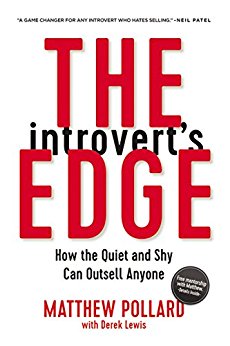 There’s a science to why stories resonate, and are remembered.
There’s a science to why stories resonate, and are remembered.
Whether it’s the team you lead, all your employees, your customers, prospects, family members, or simply someone you are trying to impress, a story compelling, engages people to take action.
We shared the science of this in The Science of A Story – The Introvert’s Edge.
Who do you wish to inspire, impress, remember your message and take action?
 Crafting a Great Story
Crafting a Great Story
We’ve shared a number of stories. In January of 2012 I shared a personal story of my son Joshua’s pursuit of his One Thing.
Just a month later when I discovered I had Acute Myeloid Leukemia, I shared my fears in A Personal Story – Can You Sell Your Business?
In Catalyst Re-Discovery - The Coach & the Tool I shared the story of my miraculous recovery.
The emotion, the feelings in theses story may help you understand the value of crafting a story for your business. Whether it’s to sell prospects, customers, your own team, or to motivate your team to achieve your One Thing this quarter or year. Getting your team to attack a specific challenge is one reason Themes are so effective. There’s a story behind every theme.
Read the story by Essentialism author Greg McKeown on Stephen Covey in A Story of Courage – The Disciplined Pursuit of Less. It’s authenticates Covey’s belief’s and the importance and priority he put on family, and in this instance his daughter.
Stories move us, make us feel, compel us to action. A good story will do more than all the exhorting, challenging, and shouting you can muster!
Don’t just tell them off the cuff. Write it down and practice, practice, practice.
Four Steps to Craft a Compelling Story
 Matthew Pollard in The Introvert's Edge: How the Quiet and Shy Can Outsell Anyone, shares the structure below to help understand what to focus on, how long the elements should be, and the components your story should include. These elements are directed to his audience, introverts, and selling:
Matthew Pollard in The Introvert's Edge: How the Quiet and Shy Can Outsell Anyone, shares the structure below to help understand what to focus on, how long the elements should be, and the components your story should include. These elements are directed to his audience, introverts, and selling:
- The problem: the lead-in to the story. Start with where the person is: This is their problem, this is their situation, and this is their emotional state (the “before” picture). You want to describe what’s going on so that your customer sees you really do understand what they’re facing. Highlight the concern, personal stress, anxiety, and frustration, such as the fear of losing it all or the hope of connecting with your child. Use sensory words: the rich smell of coffee, the wet stink of mold. You want them to feel and see themselves in the story with the same pain or desires.
- Analysis and implementation: You want to outline how you went about analyzing their situation and what you suggested would fix the problem. State their AHA! moment: They now see that they were getting in their own way or that they didn’t have the correct perspective on their challenge. Next, talk about what they had to do to achieve the solution—that is, they worked for three months solid. Above all, do not teach. The moment you sound like a teacher, you automatically place the listener in the role of the student. Nobody likes to feel they’re back in grade school. You’re not there to lecture; you’re there to motivate and inspire (like all good stories do) while sharing a moral that speaks to their needs.
- Outcome: Here, you tell the “after” part of the story: They had this return, changed their outlook, lost forty pounds, reconnected with their long-lost brother. In doing so, reestablish where they came from to where they are now: “So Alex went from being underwater with credit card debt and spending hours and hours writing monstrous proposals that nobody ever read to growing his business to seven figures with nothing more than an initial meeting and a few bullet points in an email.”
- The moral of the story: why the prospect needs that implementation. Here’s where you say, “That’s why it’s so vitally important to spend time learning the sales process. Many people would’ve said, ‘Well, that’s a lot of work,’ but when you take into account all the networking events Alex went to in order to get an appointment, going to those meetings, writing those long proposals, and the extensive follow-up—sometimes over weeks and months, and what all those activities cost him, only to wind up with a net result of ‘not interested’ . . . if you think about it, it’s not a lot of work to learn the sales process, but it is a lot of work to continue to avoid it.”
You can easily adjust each of the four steps to your audience, to create a compelling story to get your audience to take action.
Growth demands Strategic Discipline.
Positioning Systems helps your business grow through the Four Decisions: People, Strategy, Execution, Cash.
Each of the Four Decisions Produces a specific outcome. In our coaching process, we tell stories to illustrate the examples of the Four Decisions and each of the exercises and resources we use with our customers.
|
DECISION |
RESULT/OUTCOME |
|
PEOPLE |
|
|
STRATEGY |
|
|
EXECUTION |
|
|
CASH |
|
If you’re business is failing to achieve industry leading results in any of these areas, that Decision should be your One Thing.
Positioning Systems helps mid-sized ($5M - $250M) business Scale-UP. We align your business to focus on Your One Thing! To achieve growth, you need to evolve in today’s rapidly changing economic environment. Are you avoiding a conversation with yourself on how to can successfully grow your business? Contact dwick@positioningsystems.com to Scale Up your business!
Take our Four Decisions Needs Assessment to discover how your business measures against other Scaled Up companies. We’ll contact you.
 NEXT BLOG – The Forgetting Curve
NEXT BLOG – The Forgetting Curve
Telling a story is a powerful way to get people to remember. Over 100 years ago, German psychologist Hermann Ebbinghaus discovered how to achieve better recall: Repetition. As a radio salesperson for 20 years, I used Ebbinghaus’ research to sell radio advertising focusing on the repetitive nature of radios messages. Ebbinghaus’s findings, why and how to use it to build success in your business, next blog.






.jpeg?width=150&height=135&name=Hand%20with%20marker%20writing%20the%20question%20Whats%20Next_%20(1).jpeg)

